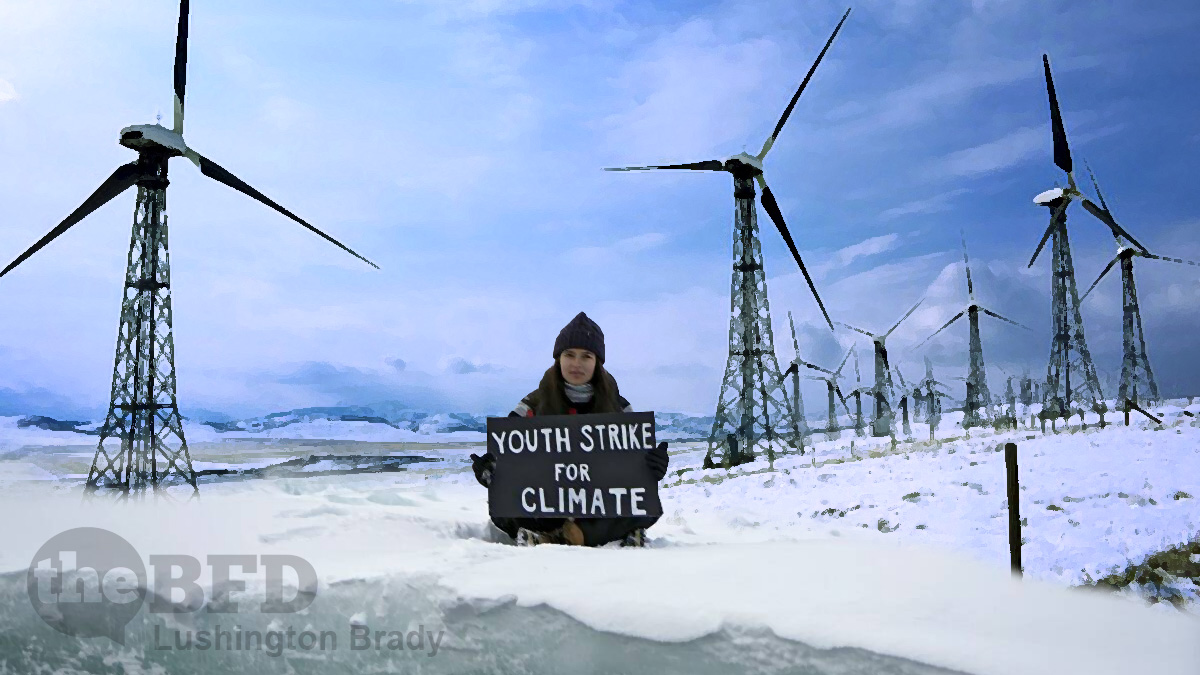Antarctica has been ice-bound for the last 34 million years. During the preceding Eocene epoch (56 to 33.9mya), Antarctica was quite a pleasant place: summer temperatures around 25°C, with palm, conifer and beech forests. But Antarctica’s fate was sealed with the final breakup of the remnants of the ancient supercontinent of Gondwana. When South America and Australia drifted away from Antarctica, it ended up surrounded by the frigid Circumpolar Current – and ice-bound ever since.
Of course, nothing is ever permanent or stable on a dynamic planet, so even the Antarctic ice sheet has had its ups and downs. The big bogeyman today, though, is that the ice sheet is in imminent danger of melting completely – all because of a mild, 1°C or so fluctuation in the Earth’s temperature.
Never mind that if global temperatures increase by 2°C or so, let alone by the ludicrously alarmist claims of 4°C, the average temperature even in the warmest areas of Antarctica will remain well and truly below freezing.
But we can’t have that kind of thinking. After all, start thinking that way and you might even start thinking that a “Climate Emergency” is a load of old bollocks.
Enter a curious new “study”.
The Antarctic ice sheet was even more unstable in the past than previously thought, and at times possibly came close to collapse, new research suggests.
The findings raise concerns that, in a warmer climate, exposing the land underneath the ice sheet as it retreats will increase rainfall on Antarctica, and this could trigger processes that accelerate further ice loss.
Pretty scary stuff, huh?
Actually, it’s yet another reminder of one of my “Lushy’s Laws” for dealing with the media: When an article claims, “science says…” or “new study shows…”, assume that it doesn’t until proven otherwise.
Especially when the study is solely based on computer models.
The research is based on climate modelling and data comparisons for the Middle Miocene (13-17 million years ago) when atmospheric carbon dioxide and global temperatures reached levels similar to those expected by the end of this century.
The study was carried out by the Met Office, the universities of Exeter, Bristol, Cardiff and Stockholm, NORCE and the Bjerknes Centre for Climate Research.
“When an ice sheet melts, the newly exposed ground beneath is less reflective, and local temperatures become warmer,” said lead author Dr Catherine Bradshaw, of the Met Office and the Global Systems Institute at the University of Exeter.
“This can dramatically change weather patterns.
Science Daily
Well, yes, it can. But there’re some pretty big assumptions to unpack, here.
Firstly, the data from the Middle Miocene the study speaks of are oxygen isotopes found in ocean sediments. As sediments are deposited, they provide something of a snapshot of past geological conditions, like any strata. The assumption is that changes in ice volume are coupled with deep water temperatures. Instead, this study argues, the relationship is to ice sheet extent.
From this, they constructed computer models purporting to show a rapid retreat in the Antarctic ice sheet.
Which brings us to the second assumption: that computer models can accurately simulate the real world climate. There is ample reason to believe that this is simply not so. Even climate modellers like Mototaka Nakamura call climate models “useless junk” and “Mickey Mouse mockeries”, when it comes to simulating the real world. Former Obama climate czar Steve Koonin has made the same point.
Don’t go breaking out the Speedos at Vostok Station just yet.
Please share this article so that others can discover The BFD

